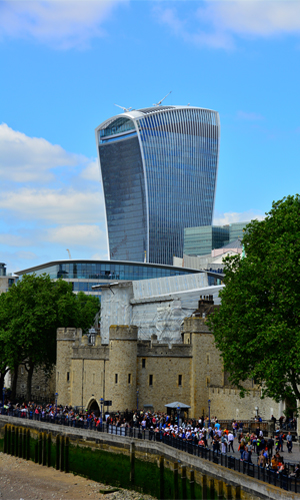Chernobyl: key milestone reached as two semi-arches join together
The structure designed to contain the crumbling casing surrounding the dangerous ruins of reactor 4 takes another great leap forward in its uncertain journey to completion. It has now been announced that the two sections of the giant containment building have been joined together in Chernobyl.

The ‘New Safe Confinement’ now stands at 360ft tall, 541ft long and 853ft wide. Its frame is constructed from a lattice of steel tube sections built on two longitudinal concrete beams – weighing in at an impressive 30,000 tons. To put that into context, it will be almost 4 times the height of Big Ben, over the length of two professional football pitches and nearly as wide as two Westminster Abbey’s. Not to mention a weigh equating to a herd of approximately 6667 fully grown Elephants!
Plans to create a new container to house the poor, leaky structure of the original makeshift sarcophagus were made as early as 1992, but construction work didn’t actually begin until September 2010. Since then it has consistently been plagued by funding issues. The cost of the entire plan is estimated to be €2.15bn, or £1.7bn. A construction such as this has never needed to be built anywhere else in the world, or had such costly obstacles and issues that needed to be addressed throughout every stage of construction.
The structure is comprised of two separate sections that were built offsite at a safe distance from the reactor, so as not to put the workers at prolonged risk of radiation exposure. The building implements two heavy duty cranes on rails that were used to slide the New Safe Confinement into place over the ruins of the reactor. It will purportedly be tornado-proof and will stand efficiently and safely for 100 years. It will also contain all the equipment required to deconstruct the old structure from within, as well as the damaged reactor.
Nuclear Safety Director at the EBRD (European Bank for Reconstruction and Development), Vince Novak said “This is another major step forward. The construction of the steel structure is nearing completion. We are confident that all work will be concluded by end-2017 as planned.”
There is still a lot of work to be done until the structure is completed and can be positioned in its final destination. The official date for completion is now the end of 2017; a two year extension on the original date given of 2015. This is because the project is reportedly currently running short of money, €600m behind by the end of the year, to be exact. Also casting a dark shadow over the project are proposed government sanctions that will freeze construction work within the Ukraine; all alarming obstacles that could potentially trip the Chernobyl Shelter Implementation Plan on its rocky road to success.
On 26th April 1986, during a safety check, reactor 4 of the Chernobyl power plant experienced a meltdown that could not be contained. As a result, it is estimated that more than 100,000 people have died as either a direct result of fallout or from subsequent radiation-related illnesses. It is also estimated that over £111.7 billion worth of damage was caused by the disaster. These astounding figures prove that regardless of who is considered responsible for the accident, cleaning up Chernobyl is of worldwide concern. If another reactor had blown during the meltdown, Chernobyl could have rendered the whole of Europe uninhabitable.
The sheer scale and paramountcy of this project cannot be overstated. As you read this the old sarcophagus is crumbling, threatening to release 200 tons of radioactive material into the environment. All eyes are on the Ukraine as they painstakingly press forward, working tirelessly on arguably the most important structure of the 21st Century.















